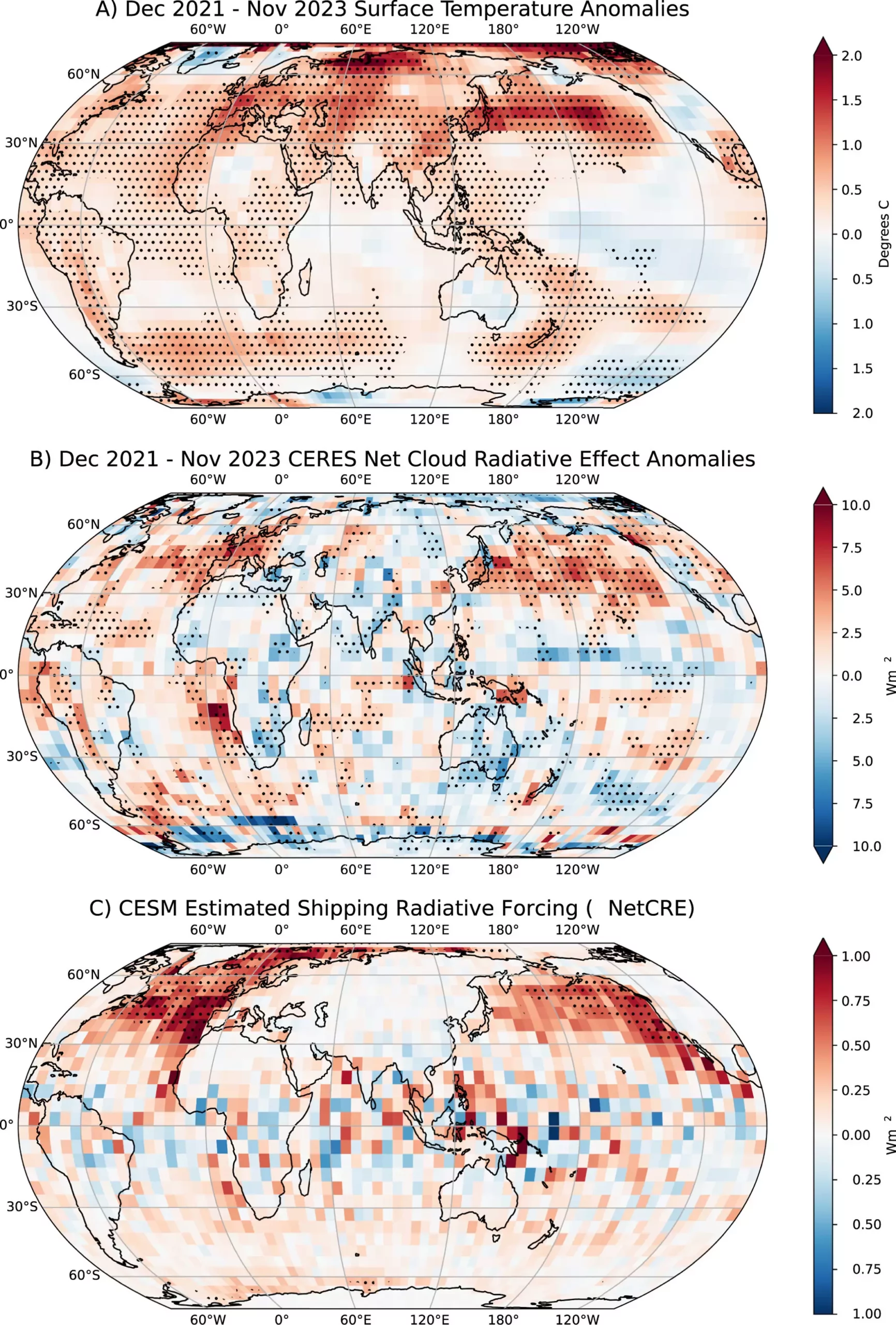The year 2023 has etched itself into the annals of climate history as the warmest year recorded, prompting an array of studies to discern the factors contributing to this alarming trend. A recently published article from scientists at the Pacific Northwest National Laboratory examined an unexpected player in the climate warming narrative: reduced sulfur emissions from the shipping industry, which they suggest could attribute nearly 20% of this year’s heat. This revelation is striking, especially as it raises complex questions about the interactions between human activity and natural climate systems.
In 2020, the International Maritime Organization imposed regulations that mandated an 80% reduction in sulfur content in shipping fuels globally. Originally enacted to enhance air quality around ports and reduce acid rain, these regulations achieved their intended goal but also resulted in a notable decrease in sulfur aerosols in the atmosphere. When ships operate, sulfur dioxide released during fuel combustion undergoes chemical reactions in sunlight, producing aerosols that play a pivotal role in cloud formation. These aerosols are known for their cooling effect, reflecting sunlight and, thus, mitigating warming.
However, with fewer ships emitting these particles, the often-overlooked consequence emerges: a reduction in the brightness and prevalence of cooling clouds, specifically those created along busy maritime routes. Insights derived from the study revealed a significant decrease—notably between 25% and 50%—in visible ship tracks, correlating to an increase in temperatures in areas where the clouds diminished.
The connection between the reduction in sulfur emissions and the consequent warming reveals intricate atmospheric dynamics. Ships contribute to a type of cloud known as ship tracks that both cool the planet and facilitate more extensive cloud systems in their wake. Such clouds can scatter incoming solar radiation, ultimately affecting local and global temperatures. With the decline in ship tracks, an unexpected warming effect has been seen—one that the scientific community has increasingly recognized as connected to the deleterious effects of shipping emissions regulations.
Through machine learning techniques, the research team meticulously analyzed over one million satellite images to assess patterns of cloud formation and temperature changes. This innovative approach highlighted the paradox that addressing one environmental issue—air quality—can inadvertently exacerbate another—climate change.
Despite the stunning implications of the study, the authors caution against attributing the entire temperature surge of 2023 solely to these regulations on sulfur emissions. Various contributing factors, including greenhouse gas contributions and natural climate oscillations, complicate the climate narrative. Indeed, the observed warmth cannot be wholly ascribed to changes in sulfur levels. The interdependencies between aerosols, greenhouse gases, and broader climatic shifts create a net of uncertainty that scientists find challenging to unravel.
Andrew Gettelman, who spearheaded the research, articulated the dilemma faced by policymakers: “Cleaning up air quality faster than limiting greenhouse gas emissions may be accelerating climate change.” This remark underscores the urgency for a thorough understanding of how reducing pollutants like sulfur may interplay with global warming dynamics. In this context, the challenge of forecasting future warming escalation becomes increasingly complex, especially considering that aerosols have a significantly shorter atmospheric lifespan than greenhouse gases.
As atmospheric conditions evolve in response to reduced sulfur emissions, a cascade of effects may materialize in the coming years. Predictions remain particularly precarious given the uncertain nature of aerosol dynamics. The authors stress the need for improved data on ship emissions and positions, while also emphasizing the vital role of oceanic feedback mechanisms in climate modeling.
The findings highlighted in this study pave the way for crucial conversations on climate interventions, especially regarding the deliberate introduction or seeding of aerosols into the atmosphere to counteract warming. Given the uncertainties, continued research and proactive planning will be essential to navigate the complexities of climate change while safeguarding both air quality and planetary health. Ultimately, as we endeavor to understand the multifaceted interconnections in our climate systems, this study serves as a significant reminder of the unforeseen consequences our environmental regulations can sometimes bring.


Leave a Reply